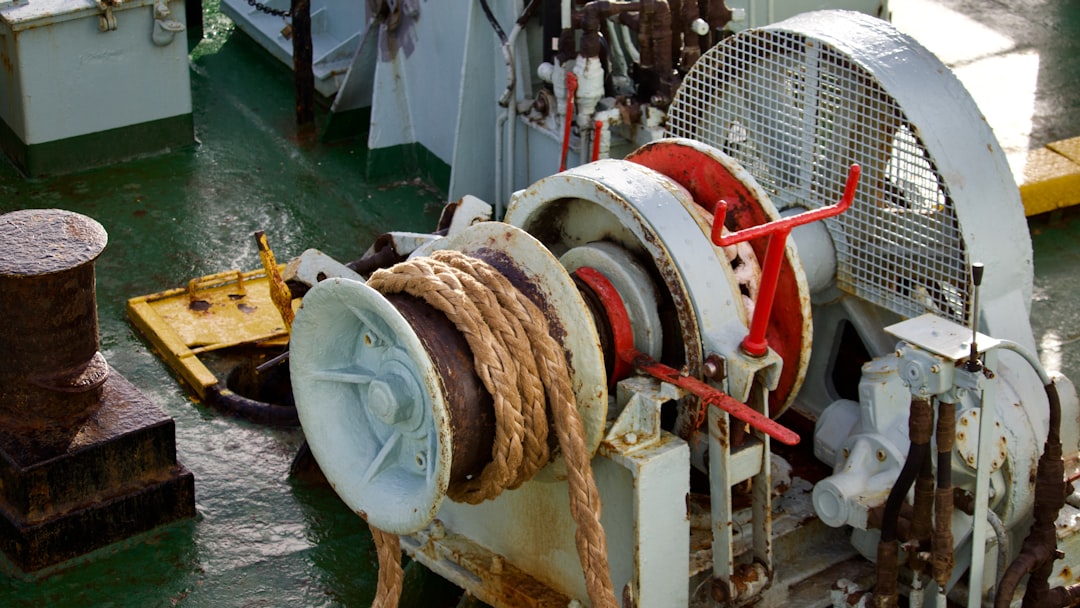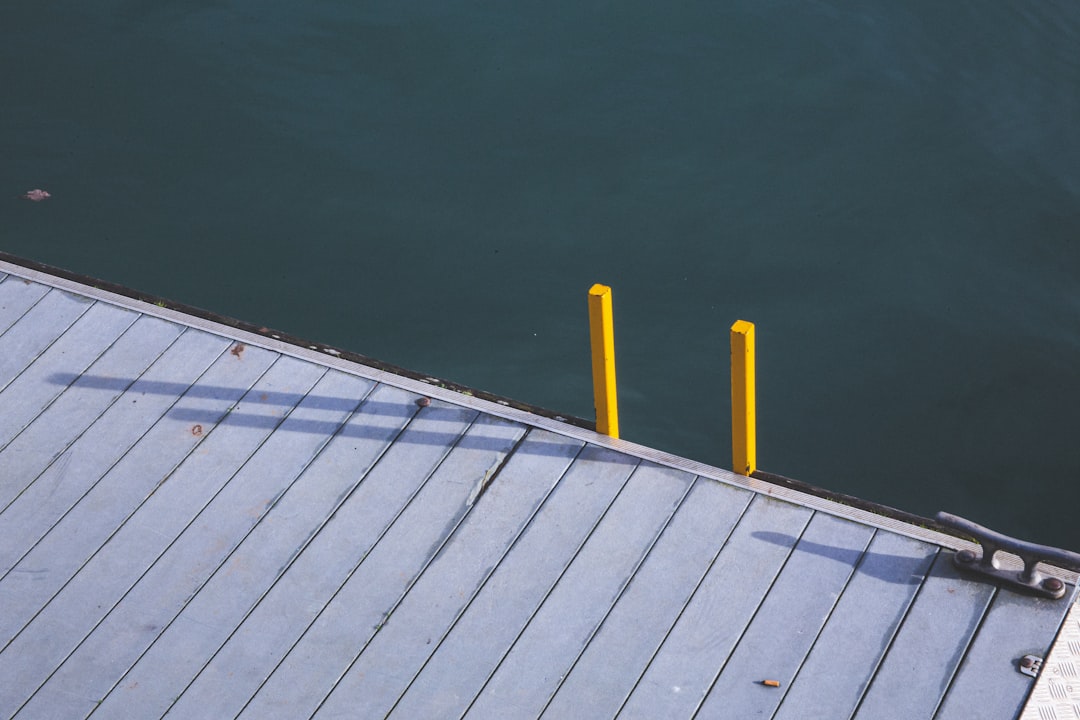

Engage prospects with a scan and streamline customer engagement with FREE QR code marketing tools by Sona – no strings attached!
Create a Free QR CodeFree consultation

No commitment

Engage prospects with a scan and streamline customer engagement with FREE QR code marketing tools by Sona – no strings attached!
Create a Free QR CodeFree consultation

No commitment
The deck repair services industry is undergoing rapid change as homeowners and property managers increasingly demand responsive, digitally connected solutions for aging wooden decks, composite repairs, and patio restoration. For years, the industry leaned heavily on analog touchpoints such as paper brochures and on-site estimates, but this approach often causes missed business, delayed follow-up, and a poor understanding of customer engagement.
A major pain point emerges when interested prospects interact with printed signs or flyers but lose momentum before reaching out. Without a way to seamlessly capture intent during these offline moments, service providers risk missing high-value leads who never make it into the system. This challenge is compounded by the expectation for immediate, convenient transitions between seeing a local yard sign and requesting a quote or maintenance tips online.
QR codes in marketing offer a practical and proven bridge, transforming any printed or physical asset into an instant digital gateway. By allowing prospects to scan and access quotes, book services, or connect for advice without hassle or delay, QR codes help capture leads in real time, address the frustration of unknown or untracked visitors, and make every interaction actionable. Explore how a thoughtful QR strategy can address pain points and unlock new possibilities at every stage of the deck repair journey.

One of the core frustrations in deck repair is missing promising leads due to reliance on outdated processes such as manual sign-up sheets at shows or waiting for homeowners to initiate contact online, often after initial interest fades. This lag not only causes lost opportunities but also enables competitors to act first. QR codes close these gaps by turning every physical interaction into a direct line for digital engagement, right when intent is strongest.
The shift is simple but powerful. Replace static, analog materials with scannable gateways that funnel prospects directly into quote requests, maintenance reminders, or educational content. With tracking enabled, you can see which placements work, where they work, and how to optimize them. This is a frictionless way to elevate response speed, tighten follow-up cycles, and strengthen your sales pipeline. See features on Sona QR product overview.
Modern tools like Sona QR support full-funnel tracking from scan to submission, including CRM enrichment and automated outreach. This closes the loop on offline activity, enabling timely responses and better conversion rates. With QR codes integrated across your materials, lead capture becomes continuous and measurable instead of episodic and opaque.

Deck repair providers frequently run into the problem of not knowing which prospects are interacting with offline branding, whether through signage, invoices, or event materials. Without a prompt, testable way to move prospects online and identify them, marketing performance stays hard to quantify. For strategy, see Sona’s take on offline attribution. QR codes fix this by converting interest into action and giving you granular data on what worked.
Beyond attribution, QR codes reduce micro-frictions throughout the customer journey. Homeowners typically want a quick estimate, proof of workmanship, or guidance on safety concerns. A QR code can immediately satisfy these needs by linking to calculators, galleries, checklists, or live chat. The result is a smoother path from awareness to booking with fewer opportunities for drop-off.
For deck repair services navigating seasonal swings and local competition, QR codes transform every print touchpoint into a measurable, conversion-ready experience that guides strategy and growth.

In the deck repair industry, lead loss often occurs after fleeting offline interactions such as a homeowner viewing a yard sign or meeting your team at a home show. Matching QR formats to specific intents keeps those interactions alive and impactful. It also ensures your team captures context that is essential for smart follow-up.
Different QR types support different jobs to be done. Some formats accelerate scheduling, others gather contact details, and some reduce friction for field crews and property managers. The goal is to select the right destination for the right moment, then segment and measure the outcomes.
With Sona QR, you can generate these formats, manage them in one place, and switch destinations as offers or priorities change. Dynamic codes are recommended for campaigns and at-scale placements; static codes are suitable for evergreen downloads or general contact pages.

Deck repair businesses win when they insert QR codes at the exact moment curiosity or need is highest. This is often when a prospect sees proof of your work, receives mail from you, or is reminded of maintenance after a service. Placing scannable calls to action in these moments turns passive impressions into trackable opportunities.
Identify your most frequent offline encounters, then assign a specific objective to each placement. For instance, yard signs can focus on estimate bookings, while invoices can focus on maintenance plans and reviews. The more targeted your strategy, the better your data and results.
By mapping QR codes to these high-impact locations, you reduce lead leakage, capture actionable performance data, and meet homeowners with value at the precise moment they are ready to engage.

Every stage of the deck repair customer journey carries risk if interest is not captured or nurtured. QR codes standardize conversion paths and enable outcomes you can measure. Focus on use cases that directly tie to booked work, repeat business, and social proof.
Place each code with intent. A yard sign should prioritize speed to schedule. A job site handoff should prioritize reviews and referrals. A warranty packet should prioritize maintenance reminders. The more you align use case and placement, the stronger the outcome.
These use cases channel attention toward outcomes you can track and optimize. When paired with dynamic QR codes and a platform like Sona QR, each scan becomes the start of a personalized path to revenue.
Every scan generates a signal: who engaged, where they were, and what they wanted. Aggregating these signals across placements lets you segment audiences based on intent rather than assumptions. For deck repair, this translates into smarter routing for sales, meaningful nurture tracks, and more efficient ad spend. Learn more about intent data.
Design your QR strategy like a funnel. Create different codes for awareness, consideration, and conversion. Tag each scan with meaningful metadata such as neighborhood, property type, or urgency. Then sync it all to your CRM and ad platforms to scale targeted follow-up.
For deck repair specifically, segment audiences like these: single-family homeowners vs. property managers, storm-affected neighborhoods vs. routine maintenance areas, composite upgrade researchers vs. basic repair seekers, and past clients vs. net-new prospects. Retarget each cohort with creative and offers aligned to their path.
QR codes act as connective tissue across print and digital channels. They bring instant interactivity to offline moments and attach attribution to placements that were previously hard to measure. In deck repair, that means every flyer, sign, and invoice can become a trackable, conversion-minded touchpoint.
Use QR codes to centralize marketing data and unify the customer experience. A homeowner who scans a yard sign, watches a gallery, and then schedules online should be recognized as the same person across your tools. With Sona QR, every scan can become an identifiable touch that flows into your CRM with the right tags and actions.
QR codes serve as the offline on-ramp to your digital marketing engine. With a centralized platform like Sona QR, you can manage all codes, monitor performance by media type and location, and sync scan data with your CRM and ad platforms for full-funnel visibility.
Start by defining a single business outcome for the campaign. Do you want to book more inspections, collect more reviews, or upsell maintenance plans? Clarity on the outcome dictates placement, creative, and the optimal destination page. In deck repair, the most profitable early move is often a “Scan to book your inspection” CTA on yard signs and door hangers near active job sites.
Align the use case with a clear homeowner benefit. If your goal is review collection, emphasize how a quick scan supports local crews and helps neighbors choose a trusted provider. If your goal is storm triage, promise a same-day callback. Benefit-forward copy paired with a QR code converts curiosity into action.
Choose static or dynamic based on flexibility and tracking needs. Static codes work for evergreen assets that do not require changes over time. Dynamic codes let you update the destination after printing and collect rich analytics on scans, which is ideal for campaigns that evolve or run across many placements.
For most deck repair campaigns, dynamic QR codes are the right choice. They enable A/B testing, localized destinations, and comprehensive reporting. You can reuse physical materials while changing seasonal offers, shifting lead routing, or refreshing galleries without reprinting.
Good design increases scan rates. Make the code large enough to be scanned from context-appropriate distances and include a strong call to action that tells people exactly what they get by scanning. Use a branded frame and a short, benefit-centric line so the value is obvious at a glance.
Always test before launching. Check scannability across device types, angles, and lighting conditions. If codes will be placed outdoors, test at the expected viewing distance and consider materials that reduce glare. Confirm that the destination loads quickly and is mobile-friendly. A slow or confusing landing page kills momentum.
Put your QR codes where intent naturally spikes. For deck repair, this often means active job sites, nearby neighborhoods, direct mail to likely buyers, and home shows. Tailor the CTA to the context. A yard sign should emphasize scheduling, while an invoice insert can emphasize reviews or maintenance.
Segment deployments to learn quickly. Use unique dynamic codes for each channel so you can see which ones produce the most scans, submissions, and booked appointments. If one neighborhood outperforms others, scale presence there with additional signage or follow-up mailers.
Tracking is what turns QR codes from a convenience into a growth engine. Use a platform like Sona QR to monitor scans by time, location, device type, and campaign source. Map scans to conversions and revenue in your CRM, then pivot your budget to placements with the strongest yield.
Optimize in short cycles. Test variations in headlines, CTA language, and placements. Iterate on destinations based on drop-off analysis. If your cost calculator outperforms your gallery in driving bookings, lean into that and feature it in more contexts.
A persistent challenge in deck repair marketing is proving that offline engagement translates into real business. Without unifying scans, web visits, and CRM outcomes, you are left guessing which signs, mailers, or event materials produced revenue. Centralized QR tracking platforms solve this by tying the initial scan to downstream results like booked inspections, approved estimates, and paid invoices.
With Sona QR and Sona, you move from anecdotal insight to data-backed clarity. Each scan is captured with time, device, and location, then matched with landing page activity and CRM events. You can view funnel conversion rates, compare placements, and attribute revenue back to the original offline touchpoint.
The result is a full-funnel view from scan to revenue. You can explain which assets deserve more investment, which messages resonate, and how to route leads for fast follow-up. As a performance marketer or owner-operator, this clarity unlocks smarter decisions and higher ROI.
As you scale QR usage, two issues often emerge: unclear attribution across channels and slow, manual follow-up. Solve both with a disciplined approach to code management, analytics, and automation. Start with unique codes for every placement, add UTM parameters for digital reporting, and connect scan events to workflows that nudge prospects while interest is high.
Equip your field crew and office staff to promote scanning. The more your team understands the value proposition and talks about it confidently, the more homeowners will engage. Combine that with easy-to-scan designs, concise landing pages, and instant confirmations, and you will see consistent improvements in conversion.
You can generate and track your first QR codes for free with Sona QR. Start creating QR codes for free, create dynamic codes in minutes, and connect them to your CRM to start attributing offline engagement to real business outcomes.
Deck repair businesses that embed QR codes into every touchpoint such as yard signs, printed collateral, event banners, supplier counters, and work invoices overcome longstanding barriers like lead loss, anonymous engagement, and untrackable ROI. By transforming offline attention into digital action, you eliminate friction in inquiry capture and gain full-funnel visibility from first scan to closed job.
This approach aligns with how homeowners prefer to interact today. Scannable calls to action meet them where they are, while dynamic destinations keep your message timely and relevant. With Sona QR and Sona.com, you can centralize management, automate follow-up, and attribute revenue with confidence, accelerating growth in a competitive local market.
QR codes have revolutionized the deck repair services industry by transforming traditional customer interactions into dynamic, measurable engagement opportunities. Whether it’s simplifying customer acquisition, enhancing client communication, or providing instant access to repair guides and service options, QR codes replace cumbersome processes with seamless, mobile-friendly actions that capture real-time data and drive actionable insights. Imagine your clients scanning a code to instantly schedule repairs, access maintenance tips, or request quotes—turning every interaction into a potential lead.
With Sona QR, you can create dynamic, trackable QR codes in seconds, update campaigns instantly without the need to reprint, and connect every scan directly to your revenue streams. This means smarter marketing, efficient customer follow-ups, and a clear view of what drives your business growth. Start for free with Sona QR today and transform every scan into a loyal customer and profitable opportunity.
Choose a deck repair service that offers responsive, digitally connected solutions and uses modern tools like QR codes for faster communication and transparent tracking of your project.
Signs include aging wooden decks, damaged composite materials, or visible wear that may require restoration or safety inspections.
Deck repair costs vary, but using QR codes linked to cost calculators or quote request forms can provide fast, personalized estimates.
Common deck materials include wood and composite, each needing specific repair approaches such as wood restoration or composite patching and upgrades.
Regular maintenance reminders, seasonal tune-ups, and following safety checklists accessible via QR codes help prevent future repair needs.
Best practices include timely inspections, using digitally accessible resources for education, scheduling maintenance via QR codes, and following professional guidance.
Project duration varies by repair type, but digital booking tools enable quick scheduling and faster response times.
Permit requirements depend on local regulations and repair scope; consult with your deck repair provider who can guide you accordingly.
Latest trends include using QR codes for seamless offline-to-online engagement, dynamic content updates, and data-driven marketing for improved service delivery.
Scan QR codes on completion packets or invoices to access review platforms where customers submit testimonials and ratings.
Use Sona QR's trackable codes to improve customer acquisition and engagement today.
Create Your FREE Trackable QR Code in SecondsJoin results-focused teams combining Sona Platform automation with advanced Google Ads strategies to scale lead generation

Connect your existing CRM

Free Account Enrichment

No setup fees
No commitment required

Free consultation

Get a custom Google Ads roadmap for your business






Launch campaigns that generate qualified leads in 30 days or less.
